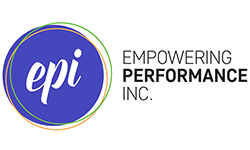January eLearning Bytes: Do. Or Do Not.
“What do you want your employees to DO with the information they learn?” This is one of the most important questions we can ask clients at the kickoff of a new eLearning project.
It gets the client thinking about the end result of training, as opposed to the path to take to get there.
From our years of eLearning and instructional design experience, we’ve discovered that the best partnerships result from trust. Trusting ourselves and forging a relationship that gives our clients confidence in us.
Ultimately, it’s this trust and confidence that allows us to create the best solution for the learner. This was brought home to us recently with an eLearning course we designed.
Our client’s initial goal was for employees to “understand the ethics policy.” They thought the best way to reach that goal was to pre-teach the ethics policy and then have an assessment.
But we had something different in mind.
First, we collaborated with the client to develop a comprehensive set of scenarios covering common ethics situations. Then we redirected the conversation to illustrate that the answer to the “DO” question was really “We want our employees to respond appropriately – to choose the correct action – when they’ve observed an ethics violation.”
This also meant it was essential for the learners to know where to find the policy for later reference. So, we proposed a more immersive learning solution with no pre-teaching (aka information dumping) of the policy.
Learners would discover key policy elements through multi-stepped scenarios. There would be no traditional menu or Back/Next buttons. The client was on board with the scenarios, but they had misgivings about the non-traditional format and asked that we stick to their original design request.
And this is where experience, confidence, trust, a leap of faith, and a Plan B come into the story…
Experience: We knew the more immersive solution was the best for the learner in this situation.
Confidence: We knew we could brainstorm with our EPI wizards to create something magical.
Trust: We knew we had built a foundation of mutual trust and respect with our client. We trusted our development team. And we trusted our sense of the client’s willingness to keep an open mind.
Faith: We believed that once our client saw the immersive prototype (missing Back/Next buttons and all), they would share our vision for the learner’s path.
Plan B: We also prepared a more traditional alternative, just in case things didn’t go as we hoped.
So, what was our client’s reaction? “You didn’t do what we had asked and, instead, went the more immersive route.” [Long nerve-wracking pause here.] “But our team loved it! It was a good decision.” EPI happy dance ensued. Lessons learned?
Do find unique ways to present content.
Do build your experience, and then rely on it.
Do take the time to connect with your client. It lays the foundation for trust.
Do what’s best for the learner.
Do not always take no for an answer.
P.S. Cathy Moore has valuable tips on how to avoid information dumping when developing eLearning courses.

